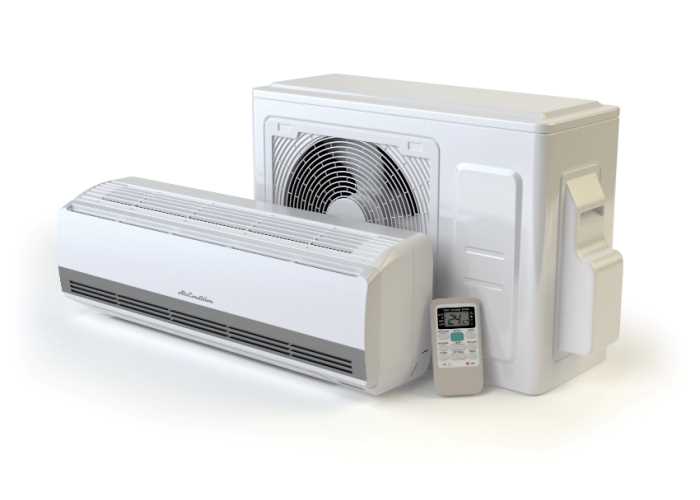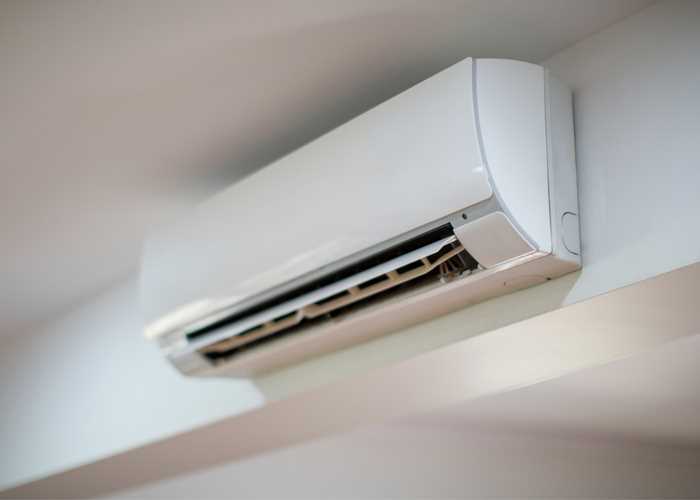Multi-split air conditioning offers a versatile and energy efficient solution for cooling (and heating) your property. By connecting multiple indoor units to a single outdoor unit, you can achieve customised comfort throughout your home.
Whether you're dealing with limited outdoor space or looking for an efficient way to manage your indoor climate, a multi-split system could be the ideal choice.

A multi-split air conditioning system is an electric cooling and heating solution. It works in the same way as a single-split system, using refrigerant to transfer heat between the indoor and outdoor units.
The key difference is the number of indoor units you can connect.
With a single-split, you need one outdoor unit for every indoor unit. But with a multi-split, you can connect multiple indoor units to a single outdoor unit—sometimes as many as nine, depending on the model.
These units can be set to different temperatures to suit different needs and preferences (though only in the same mode). So for example, if one member of the household prefers much cooler conditions overnight to everyone else, they can set their bedroom unit to a lower temperature.
This makes it a versatile solution. Additionally, having one outdoor unit instead of several helps to save space and reduce the external footprint of the system.
Understanding how these systems work can help you make a more informed decision about their suitability. We can break this down into four key parts of multi-split operation.
The heart of the system is the refrigerant, a substance that absorbs heat from the indoor air and releases it outside.
The refrigerant circulates between the outdoor unit and the indoor units through copper pipes.
When the system is in cooling mode, the refrigerant absorbs heat from the indoor air and transports it to the outdoor unit, where it is expelled. In heating mode, the process is reversed, and heat is absorbed from the outside air and brought inside.
Each indoor unit contains an evaporator coil where the refrigerant evaporates, absorbing heat from the indoor air.
The cooled air is then blown back into the room by a fan. The outdoor unit contains a condenser coil where the refrigerant releases the absorbed heat and condenses back into a liquid.
The compressor in the outdoor unit pumps the refrigerant through the system.
Inverter technology allows the compressor to adjust its speed based on the cooling demand, which enhances energy efficiency by avoiding constant start-stop cycles.
Each indoor unit is equipped with a thermostat and can be controlled independently.
This means you can set different temperatures for different rooms or zones, providing personalised comfort and reducing energy consumption by only cooling occupied spaces.
Individual Room Control
One of the standout features of multi-split systems is the ability to control the temperature in each room independently.
This means you can cool the living room while keeping the bedroom at a different temperature, or even turn off the cooling in rooms that are not in use.
Energy Efficiency
Because you can control the temperature in each room, you avoid the energy waste associated with cooling or heating unoccupied spaces.
Additionally, advancements in inverter technology mean that these systems can operate more efficiently by adjusting the compressor speed to match the cooling demand.
Quiet Operation
Modern multi-split systems are designed to operate quietly, making them ideal for bedrooms, home offices, and other spaces where noise can be a concern.
Space-Saving Design
Multi-split systems can be particularly beneficial in urban homes or flats where outdoor space is limited. Having one outdoor unit serving multiple indoor units saves space and reduces external clutter.
Aesthetically Pleasing
Indoor units of multi-split systems come in various designs and styles to match your interior decor.
Whether you prefer sleek wall-mounted units or discreet ceiling-mounted units, there's a design that can blend seamlessly into your home environment.

While multi-split systems offer numerous benefits, they may not be the best fit for every home. Here are some considerations to help you decide:
Multi-split systems can have a higher initial cost compared to single split systems or window units. However, the long-term energy savings and increased comfort may justify the upfront investment.
The layout of your home plays a significant role in determining the suitability of a multi-split system.
These systems are ideal for homes with multiple rooms or zones that require individual temperature control. They may be less beneficial in open-concept homes where a single cooling zone is sufficient.
Installing a multi-split system requires professional expertise, as it involves setting up refrigerant lines, electrical connections, and indoor units in multiple locations. Ensuring that the installation is done correctly is crucial for the system's efficiency and longevity.
Regular maintenance is essential for any air conditioning system to operate efficiently. With a multi-split system, you’ll need to maintain multiple indoor units along with the outdoor unit.
For indoor units, you’ll need to clean or replace filters regularly. For outdoor units, it’s important to keep these clear of debris or anything that may affect airflow.
Multi-split systems can be highly energy efficient, especially when equipped with inverter technology.
However, the overall energy consumption will depend on how you use the system. If you frequently use all indoor units simultaneously at high settings, energy consumption could be significant.
If you’re after the ability to customise the climate in different areas of your home, a multi-split system might just be the perfect fit.
Of course, it’s always best to consult a professional air conditioning contractor. They’ll assess your specific needs and recommend the most appropriate solution.
We're a team of local experts with over 25 years in the business. We design and install quality systems with performance and longevity in mind.
